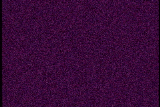Visual snow syndrome
(Redirected from Visual snow)
Editor-In-Chief: Prab R Tumpati, MD
Obesity, Sleep & Internal medicine
Founder, WikiMD Wellnesspedia &
W8MD medical weight loss NYC and sleep center NYC
| Visual snow syndrome | |
|---|---|

| |
| Synonyms | N/A |
| Pronounce | N/A |
| Specialty | N/A |
| Symptoms | Visual snow, palinopsia, entoptic phenomena, photophobia, nyctalopia |
| Complications | N/A |
| Onset | Typically adulthood |
| Duration | Chronic |
| Types | N/A |
| Causes | Unknown |
| Risks | Migraine, tinnitus |
| Diagnosis | Clinical diagnosis |
| Differential diagnosis | Migraine aura, hallucinogen persisting perception disorder |
| Prevention | N/A |
| Treatment | Medication, cognitive behavioral therapy |
| Medication | N/A |
| Prognosis | N/A |
| Frequency | Unknown |
| Deaths | N/A |
Visual snow syndrome is a neurological disorder characterized by a continuous visual disturbance that resembles the static or "snow" seen on a television screen. This condition is often accompanied by other visual and non-visual symptoms, which can significantly impact the quality of life of those affected.
Symptoms[edit | edit source]
The primary symptom of visual snow syndrome is the perception of tiny flickering dots across the entire visual field, which is present in all lighting conditions, including complete darkness. This visual disturbance is often described as similar to the static seen on an analog television. In addition to the primary symptom, individuals with visual snow syndrome may experience a range of other visual symptoms, including:
- Palinopsia (afterimages or trailing images)
- Photophobia (sensitivity to light)
- Nyctalopia (night blindness)
- Entoptic phenomena (seeing floaters, blue field entoptic phenomenon, or self-light of the eye)
Non-visual symptoms can also be present, such as:
- Migraine or migraine with aura
- Tinnitus (ringing in the ears)
- Derealization or depersonalization
Causes[edit | edit source]
The exact cause of visual snow syndrome is currently unknown. However, it is believed to be related to abnormal processing of visual information in the brain. Some researchers suggest that it may be linked to migraine disorders, as there is a significant overlap between the two conditions.
Diagnosis[edit | edit source]
Diagnosing visual snow syndrome can be challenging due to its rarity and the subjective nature of its symptoms. A thorough clinical evaluation is necessary, which includes a detailed patient history and a comprehensive eye examination to rule out other potential causes of the visual disturbances. Neuroimaging studies, such as MRI or CT scans, may be conducted to exclude other neurological conditions.
Treatment[edit | edit source]
There is currently no cure for visual snow syndrome, and treatment options are limited. Management of the condition focuses on alleviating symptoms and improving the patient's quality of life. Some approaches that have been explored include:
- Medications such as anticonvulsants, antidepressants, and migraine prophylactics
- Cognitive behavioral therapy (CBT) to help patients cope with the condition
- Tinted lenses or blue light filters to reduce visual discomfort
Prognosis[edit | edit source]
The prognosis for individuals with visual snow syndrome varies. Some patients may experience a reduction in symptoms over time, while others may have persistent symptoms. The impact on daily life can range from mild to severe, depending on the intensity of the visual disturbances and associated symptoms.
Research[edit | edit source]
Ongoing research aims to better understand the underlying mechanisms of visual snow syndrome and to develop more effective treatments. Studies are exploring the potential genetic, neurological, and environmental factors that may contribute to the condition.
See also[edit | edit source]
References[edit | edit source]
External links[edit | edit source]
Search WikiMD
Ad.Tired of being Overweight? Try W8MD's physician weight loss program.
Semaglutide (Ozempic / Wegovy and Tirzepatide (Mounjaro / Zepbound) available.
Advertise on WikiMD
|
WikiMD's Wellness Encyclopedia |
| Let Food Be Thy Medicine Medicine Thy Food - Hippocrates |
Translate this page: - East Asian
中文,
日本,
한국어,
South Asian
हिन्दी,
தமிழ்,
తెలుగు,
Urdu,
ಕನ್ನಡ,
Southeast Asian
Indonesian,
Vietnamese,
Thai,
မြန်မာဘာသာ,
বাংলা
European
español,
Deutsch,
français,
Greek,
português do Brasil,
polski,
română,
русский,
Nederlands,
norsk,
svenska,
suomi,
Italian
Middle Eastern & African
عربى,
Turkish,
Persian,
Hebrew,
Afrikaans,
isiZulu,
Kiswahili,
Other
Bulgarian,
Hungarian,
Czech,
Swedish,
മലയാളം,
मराठी,
ਪੰਜਾਬੀ,
ગુજરાતી,
Portuguese,
Ukrainian
Medical Disclaimer: WikiMD is not a substitute for professional medical advice. The information on WikiMD is provided as an information resource only, may be incorrect, outdated or misleading, and is not to be used or relied on for any diagnostic or treatment purposes. Please consult your health care provider before making any healthcare decisions or for guidance about a specific medical condition. WikiMD expressly disclaims responsibility, and shall have no liability, for any damages, loss, injury, or liability whatsoever suffered as a result of your reliance on the information contained in this site. By visiting this site you agree to the foregoing terms and conditions, which may from time to time be changed or supplemented by WikiMD. If you do not agree to the foregoing terms and conditions, you should not enter or use this site. See full disclaimer.
Credits:Most images are courtesy of Wikimedia commons, and templates, categories Wikipedia, licensed under CC BY SA or similar.
Contributors: Prab R. Tumpati, MD

